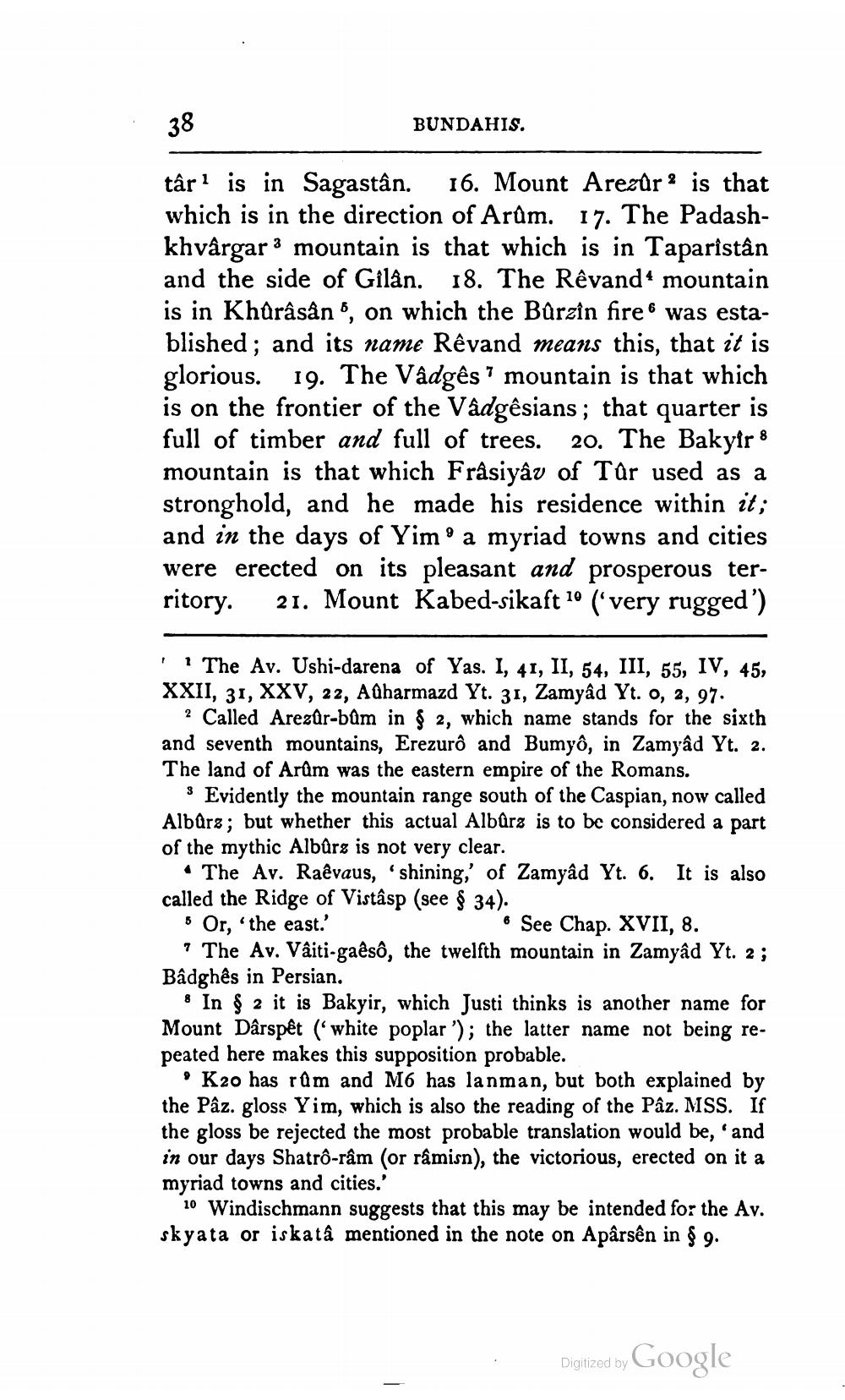________________
38
BUNDAHIS.
târ' is in Sagastân. 16. Mount Arezûr ? is that which is in the direction of Arům. 17. The Padashkhvârgar 3 mountain is that which is in Taparistân and the side of Gilân. 18. The Rêvando mountain is in Khûrâsân", on which the Burzin fire 6 was established; and its name Rêvand means this, that it is glorious. 19. The Vådgês ? mountain is that which is on the frontier of the Vådgêsians; that quarter is full of timber and full of trees. 20. The Bakyfr 8 mountain is that which Frasiyâv of Târ used as a stronghold, and he made his residence within it; and in the days of Yimo a myriad towns and cities were erected on its pleasant and prosperous territory. 21. Mount Kabed-sikaft 10 (*very rugged')
"I The Av. Ushi-darena of Yas. I, 41, II, 54, III, 55, IV, 45, XXII, 31, XXV, 22, Adharmazd Yt. 31, Zamyâd Yt. 0, 2, 97.
? Called Arezûr-bûm in § 2, which name stands for the sixth and seventh mountains, Erezurô and Bumyô, in Zamyâd Yt. 2. The land of Arům was the eastern empire of the Romans.
8 Evidently the mountain range south of the Caspian, now called Albûrs; but whether this actual Albûra is to be considered a part of the mythic Albürs is not very clear.
• The Av. Raêvaus, 'shining,' of Zamyâd Yt. 6. It is also called the Ridge of Vistâsp (see 34). 6 Or, 'the east.'
6 See Chap. XVII, 8. ? The Av. Vâiti-gaêsô, the twelfth mountain in Zamyâd Yt. 2; Badghês in Persian.
In § 2 it is Bakyir, which Justi thinks is another name for Mount Dârspêt (white poplar'); the latter name not being repeated here makes this supposition probable.
K20 has rům and M6 has lanman, but both explained by the Pâz. gloss Yim, which is also the reading of the Pâz. MSS. If the gloss be rejected the most probable translation would be, and in our days Shatrô-râm (or râmisn), the victorious, erected on it a myriad towns and cities.'
10 Windischmann suggests that this may be intended for the Av. skyata or iskatâ mentioned in the note on Apârsên in § 9.
Digitized by Google
Digitized by




